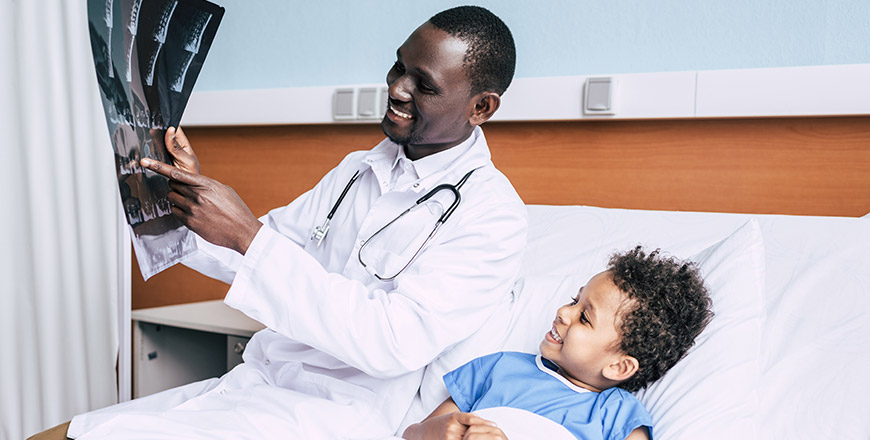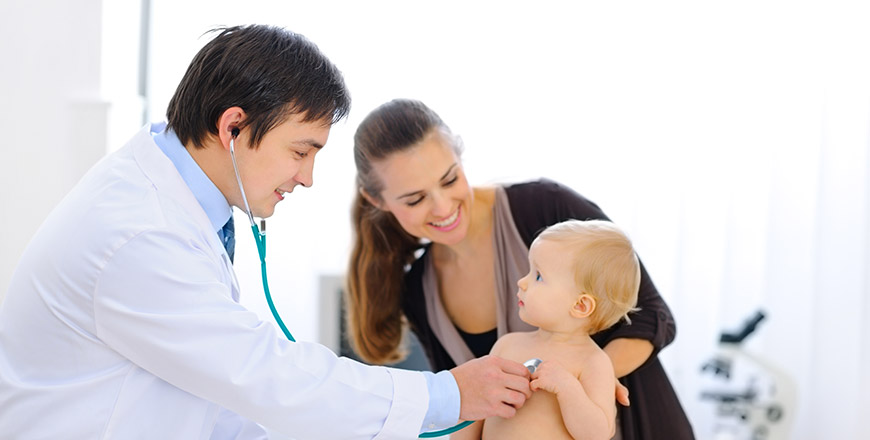Choose your category:

Spirometry measures airflow. By measuring how much air you exhale, and how quickly, spirometry can evaluate a broad range of lung diseases. In a spirometry test, while you are sitting, you breathe into a mouthpiece that is connected to an instrument called a spirometer. The spirometer records the amount and the rate of air that you breathe in and out over a period of time.
For some of the test measurements, you can breathe normally and quietly. Other tests require forced inhalation or exhalation after a deep breath. Sometimes you will be asked to inhale the substance or a medicine to see how it changes your test results.
Lung volume measurement can be done in two ways:
To measure diffusion capacity, you breathe a harmless gas, called a tracer gas, for a very short time, often for only one breath. The concentration of the gas in the air you breathe out is measured. The difference in the amount of gas inhaled and exhaled measures how effectively gas travels from the lungs into the blood. This test allows the doctor to estimate how well the lungs move oxygen from the air into the bloodstream.
Do not eat a heavy meal before the test. Do not smoke for 4 – 6 hours before the test. You’ll get specific instructions if you need to stop using bronchodilators or inhaler medications. You may have to breathe in medication before or during the test.
Since the test involves some forced breathing and rapid breathing, you may have some temporary shortness of breath or lightheadedness. You breathe through a tight-fitting mouthpiece, and you’ll have nose clips.
Pulmonary function tests are done to:
It also can be done to:
Normal values are based upon your age, height, ethnicity, and sex. Normal results are expressed as a percentage. A value is usually considered abnormal if it is less than 80% of your predicted value.
Normal value ranges may vary slightly among different laboratories. Talk to your doctor about the meaning of your specific test results.
Different measurements that may be found on your report after spirometry include:
Abnormal results usually mean that you may have some chest or lung disease.
Some lung diseases (such as emphysema, asthma, chronic bronchitis, and infections) can make the lungs contain too much air and take longer to empty. These lung diseases are called obstructive lung disorders.
Other lung diseases make the lungs scarred and smaller so that they contain too little air and are poor at transferring oxygen into the blood. Examples of these types of illnesses include:
The risk is minimal for most people. There is a small risk of collapsed lung in people with a certain type of lung disease. The test should not be given to a person who has experienced a recent heart attack, or who has certain other types of heart disease.
Your cooperation while performing the test is crucial in order to get accurate results. A poor seal around the mouthpiece of the spirometer can give poor results that can’t be interpreted. Do not smoke before the test.

If you have breathing problems triggered by exercise (running, competitive sports, jogging etc.) you may have a condition called Exercise-induced Asthma. Please come dressed in sport clothes for this testing.
We will ask you to perform PFT and then walk and run on trammel. We will check your blood pressure, heart rate and oxygen during testing. Immediately after the test and 10 minutes later we will do PFT again. All testing is directly supervised and reviewed by your doctor.
You will have final results available the same day!

This is ‘golden standard’ allergy testing. We prefer skin test to any other available laboratory tests, but sometimes it is necessary to do blood test as well. Your doctor will discuss your options during appointment. We usually test children older then 6 month in the presence of at least one parent. There is no age limit for adults. We limit test panels to 30 for kids and to 74 for adults, during the spring we may not perform any testing due to high pollen (or limit to 1/2 of usual size).
Standard skin prick test is done by simple scratching of the surface of your skin by small plastic device. If the test is positive you will develop minor local itching, area of redness and skin bump – we measure skin changes to know how significant your allergy is. We use almost painless plastic prick devices, for kids we use multi-pricks (up to 8 tests at one time!) All test takes about 45 minutes. We stop uncomfortable itching with Benadryl spray and antihistamine tablets. You do not need to lay down – instead you can sit comfortably and read favorite book.
For kids we have DVDs, toys and books that distract from the test, and then – nice toys from a treasure chest and juice-only organic lolly-pops – only nice things to remember and NO tears!
If you likely to be tested you cannot take certain medications for 5 days ANY anti-allergy pills or syrup
You should continue taking asthma medications, nasal sprays and any other medication prescribed for other health conditions. Please tell us if you are taking oral or shot steroids of any kind

Daily we use products made of chemicals – some of them potentially allergenic. They cause rashes, red swollen skin, peeling of the skin and itch.
If you developed skin rash and Doctor determined it is likely caused by contact sensitivity we will use test that involves patching small flexible panels containing multiple chemicals to your back.
As contact skin sensitivity develops over time – test also takes some time. We will ask you to come back in 48 and 72 hours after we placed it on. This is the only way to prove if you might be allergic to some metal, beauty product, soap, cream, hair dye, latex etc.
Same test (only different chemicals, mostly metals) is used to identify dental materials that you might be allergic to.

All medicines have potential to develop allergic reactions. It can happen in the childhood or any time of life. Some of the reactions are mild, but they can be deadly (anaphylaxis).
We can help you and your physician to determine if you had a serious allergic reactions to specific medication. We do skin testing to antibiotics, all anesthetics (such as Lidocaine). In some cases we recommend to take a small amount of suspected medicine under observation in our office.
What if you really need to take some medication (such as antibiotic) that you had really bad reaction to in the past? There is a solution! Special protocol is available for many medicines to be safely given back under Allergist’s careful observation. Tell your physician about such opportunity
Aspirin sensitivity can lead to serious asthma and nasal polyps. We successfully give aspirin back using specific protocol. Talk to your doctor if you have allergy to Aspirin.

If you or your child have allergy to foods you will need skin test first. Skin test is a simple procedure that give best answers – if you are positive that means you ARE allergic.
If skin test is negative we can perform direct food challenge. Under direct supervision of the doctor we give tiny portions to the food with time intervals and check for possible reaction. If we notice any signs of allergy we stop the test and treat the symptoms.
If you passed the test – your allergy is gone and you can eat this food safely!
We also perform Direct Prick Test which means we will ask you to bring the food you believe caused the problem and we prick test you to this food.

Rhinoscope is a great instrument that allows Doctor to see your sinuses, adenoids and even vocal cords without radiation and hospital anesthesia. We use topical spray which opens nasal passages and eliminates pain sensation. Rhinoscope is a flexible thin cord (about 4mm in diameter) with tiny camera at the tip – your Doctor can see if there is some infection, foreign body, polyp or large adenoid blocking your airway and causing the problem. Within minutes your Doctor can tell you if your vocal cords are functioning right and what exactly is going on inside your nose and throat.
All procedure takes about 30 min, you should avoid drinking and eating for 30 min after while local anesthesia is wearing off.